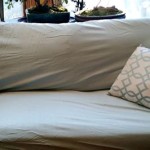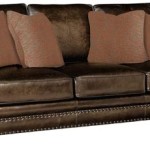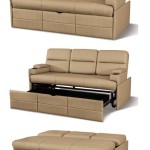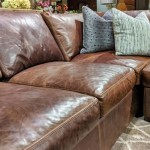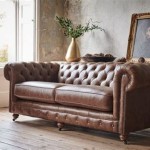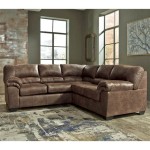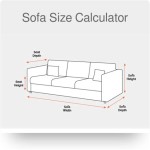Is the IKEA Kivik Sofa Comfortable? A Deep Dive
The IKEA Kivik sofa is a popular choice for homeowners seeking a blend of affordability, style, and modularity. Its clean lines and customizable configurations make it adaptable to various living spaces. However, a critical question remains: is the Kivik sofa truly comfortable? This article explores various aspects of the Kivik's construction, materials, and design features to analyze its comfort levels and suitability for different users.
Understanding comfort in furniture is subjective. What one person finds comfortable, another may not. Factors such as body weight, preferred seating posture, and tolerance for firmness or softness all contribute to the individual perception of comfort. Therefore, a comprehensive analysis of the Kivik necessitates considering multiple perspectives and design features.
Assessing the Kivik's Construction and Materials
The Kivik's frame is typically constructed from solid wood and particleboard, providing a robust and stable foundation. The combination of these materials balances durability with cost-effectiveness. The frame's design plays a significant role in the overall structural integrity and contributes to the sofa's long-term performance.
The seat cushions are composed of high-resilience polyurethane foam and polyester fiber wadding. High-resilience foam is known for its ability to bounce back to its original shape after compression, contributing to long-lasting comfort and support. The polyester fiber wadding adds a layer of softness and helps to distribute weight evenly across the cushion surface.
The back cushions are filled with polyester fibers. While polyester fibers provide a plush feel, they may require occasional fluffing to maintain their shape and fullness. Unlike down or feather fillings, polyester fibers are hypoallergenic and resistant to dust mites, making them a suitable option for individuals with allergies.
The cover material significantly impacts the tactile experience of the sofa. IKEA offers a variety of Kivik covers in different fabrics, including cotton, polyester, and various blends. The choice of fabric influences the sofa's durability, ease of cleaning, and overall aesthetic appeal. Some fabrics are more resistant to stains and wear than others, and the texture can range from smooth to textured, affecting the perceived comfort.
Analyzing the Kivik's Design Features for Comfort
The Kivik's design incorporates several features intended to enhance comfort. Its wide armrests provide ample space for leaning or resting, and the deep seats allow for a relaxed and reclined seating position. The sofa's low profile contributes to a casual and inviting aesthetic.
The seat depth is a crucial factor in determining comfort. The Kivik's generous seat depth is particularly appealing to individuals who prefer to lounge or curl up on the sofa. However, individuals with shorter legs may find the seat depth excessive, potentially leading to discomfort in the lower back. The use of throw pillows can help to mitigate this issue by providing additional lumbar support.
The height of the backrest also influences comfort. The Kivik's backrest is relatively low, providing support primarily for the lower back and shoulders. Individuals seeking full back and neck support may find the Kivik lacking in this regard. Adding cushions or pillows behind the back can improve spinal alignment and enhance comfort for extended periods of sitting.
The modular design of the Kivik allows for customizable configurations, enabling users to create a sofa that suits their specific needs and preferences. The addition of a chaise lounge, for example, can provide a dedicated space for relaxation and stretching out. The modularity also allows for easy rearrangement and adaptation to different room layouts.
Addressing Potential Comfort Concerns and Considerations
While the Kivik offers several comfort-enhancing features, some potential drawbacks should be considered. The firmness of the seat cushions is a common point of discussion. Some users find the cushions initially firm, requiring a break-in period to achieve optimal comfort. Others appreciate the firmness for its supportive qualities, particularly for individuals with back pain.
The polyester fiber filling in the back cushions may flatten over time, requiring regular fluffing to maintain their shape and fullness. This maintenance is essential to prevent the cushions from becoming lumpy or uneven. The frequency of fluffing depends on the frequency of use and the individual's preference for cushion support.
The choice of cover material can also impact comfort. Some fabrics may feel warmer or cooler than others, affecting the overall seating experience. Consider the climate and personal preferences when selecting a cover material. For example, cotton covers are breathable and suitable for warmer climates, while velvet covers offer a luxurious and cozy feel for cooler climates.
The Kivik's low profile may not be suitable for individuals with mobility issues or those who prefer a higher seating position. Getting into and out of the sofa may require more effort, particularly for elderly individuals or those with joint pain. Adding risers to the sofa legs can increase the seat height and improve accessibility.
The absence of built-in lumbar support may be a concern for some individuals. The Kivik's backrest is relatively flat, providing minimal support for the natural curvature of the spine. The addition of lumbar support cushions can help to alleviate this issue and promote proper posture.
The long-term durability of the cushions also plays a role in comfort. Over time, the foam in the seat cushions may degrade, leading to a loss of support and a decrease in overall comfort. To prolong the life of the cushions, rotating and flipping them regularly is recommended.
The surrounding environment can also influence the perceived comfort of the Kivik. Factors such as room temperature, lighting, and noise levels can all contribute to the overall relaxation and enjoyment of the seating experience. Creating a comfortable and inviting living space can enhance the benefits of the Kivik's design features.
Ultimately, the comfort of the IKEA Kivik sofa is a subjective matter dependent on individual needs and preferences. While its design offers many features that contribute to comfort, it is essential to consider potential drawbacks and make adjustments as needed. Evaluating the construction, materials, design elements, and potential concerns provides a comprehensive understanding of the Kivik's comfort characteristics. Considering these aspects allows individuals to determine if the Kivik sofa is a suitable choice for their living space and personal comfort requirements.

Kivik Sectional Review And Farmhouse Decor Free Range Cottage

Kivik Sofa Review One For The Sleepers

Kivik Sofa Series Review Pros And Cons Of Our Top Favorite Couch

Kivik Sofa Review One For The Sleepers

Kivik One Year Review Dysfunctional Ever After

Kivik Sofa And Chaise Review A Mom S Take

Kivik Sectional Review Free Range Cottage

Kivik Sofa Review Selector

My Kivik Sofa Review After 5 Years Love Renovations

My Kivik Sofa Review

